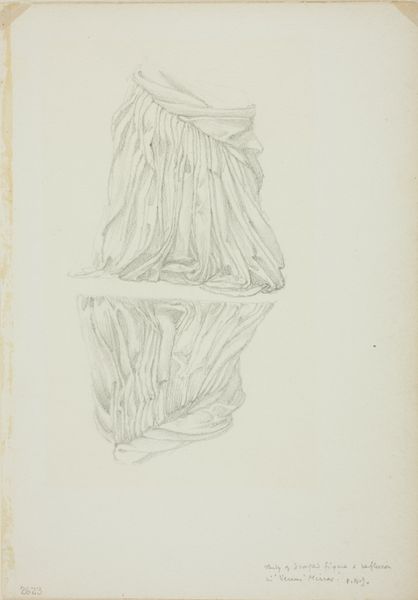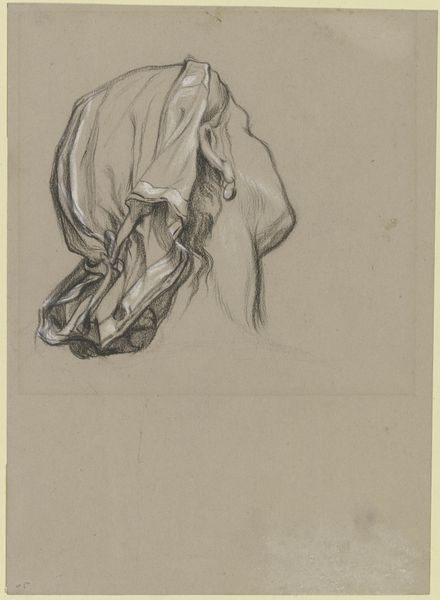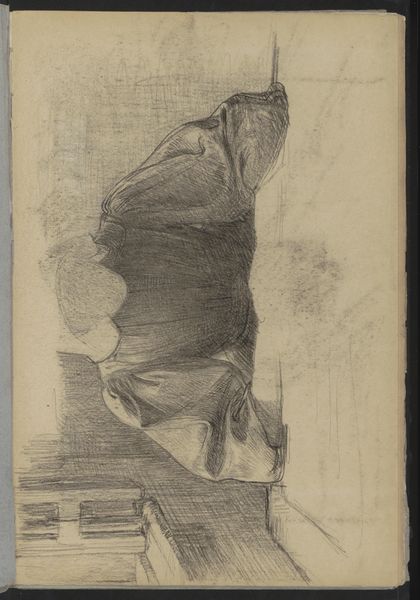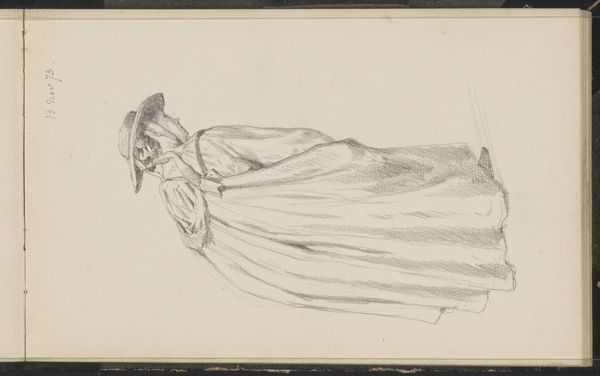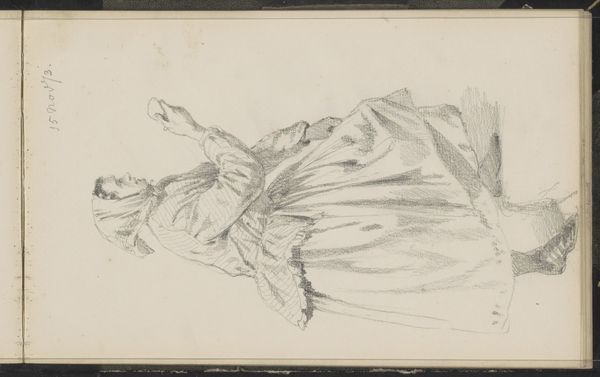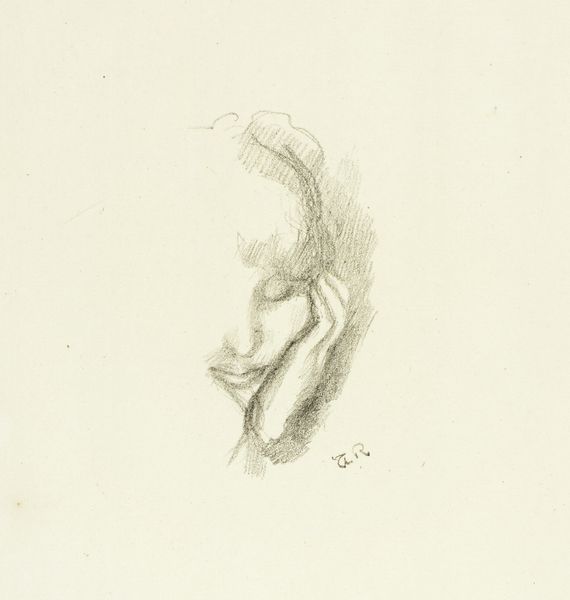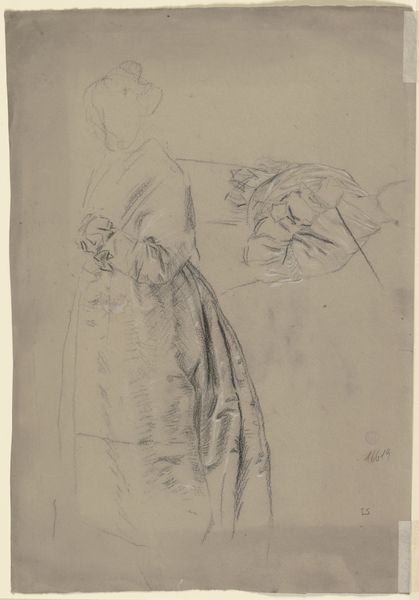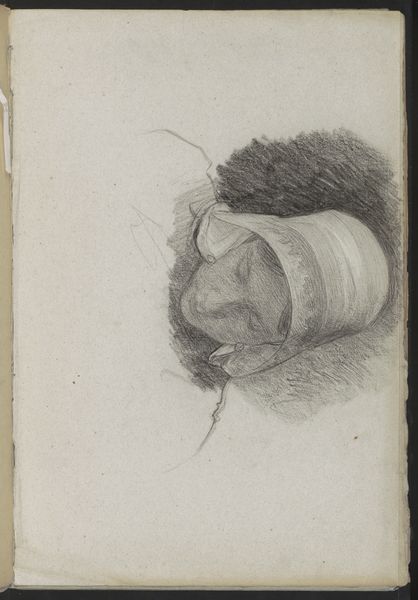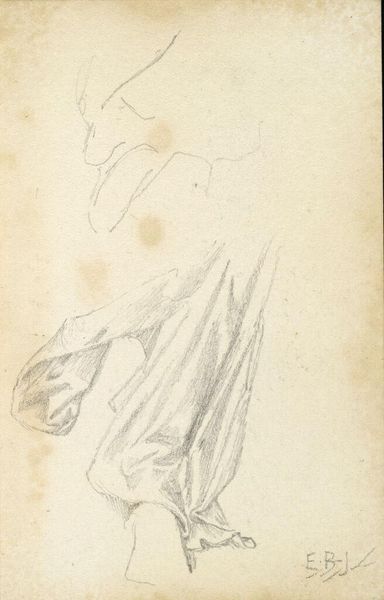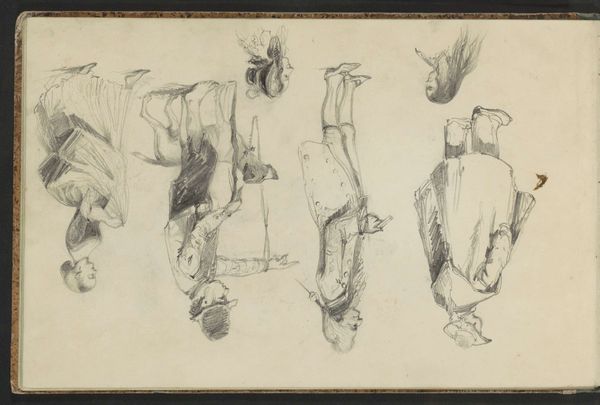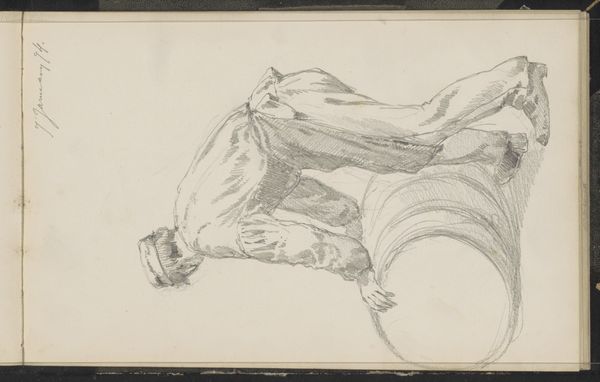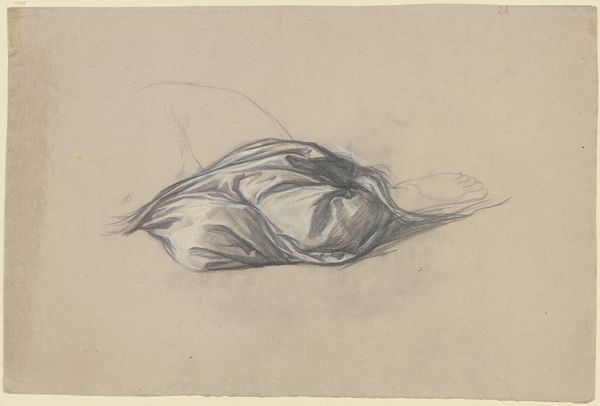
Drapery, two studies for The Mirror of Venus c. 1873 - 1877
0:00
0:00
Dimensions: 253 × 178 mm
Copyright: Public Domain
Here we see two studies in graphite, by Edward Burne-Jones, made as preparatory sketches for his painting 'The Mirror of Venus'. Created during the late 19th century, a period marked by significant shifts in gender roles and societal expectations, Burne-Jones positions Venus, the goddess of love and beauty, as a figure of contemplation and introspection. The flowing drapery, rendered with delicate precision, cloaks and defines the figures, inviting reflection on the feminine form and its representation in art. The classical garb can be seen as a conscious divergence from the contemporary fashions of the time. It alludes to a timeless ideal of beauty, yet these studies also hint at the emotional complexities beneath the surface. Burne-Jones’s aesthetic, influenced by the Pre-Raphaelites, sought to revive the sincerity and simplicity of early Italian art. While Burne-Jones was invested in ideal forms, it’s worth considering how the artist’s vision echoes, reinforces, or challenges the era’s constructs of femininity. The intimacy of these studies provides a window into the artist’s process. They also invite us to consider how classical narratives can be reimagined through a contemporary lens.
Comments
No comments
Be the first to comment and join the conversation on the ultimate creative platform.
